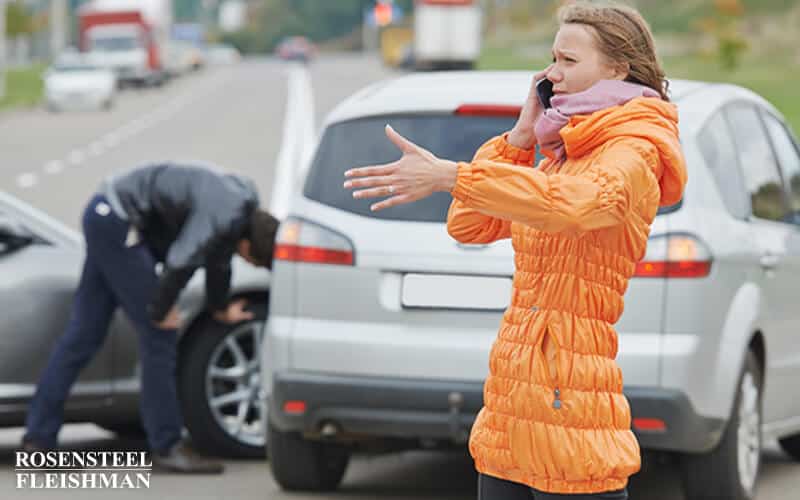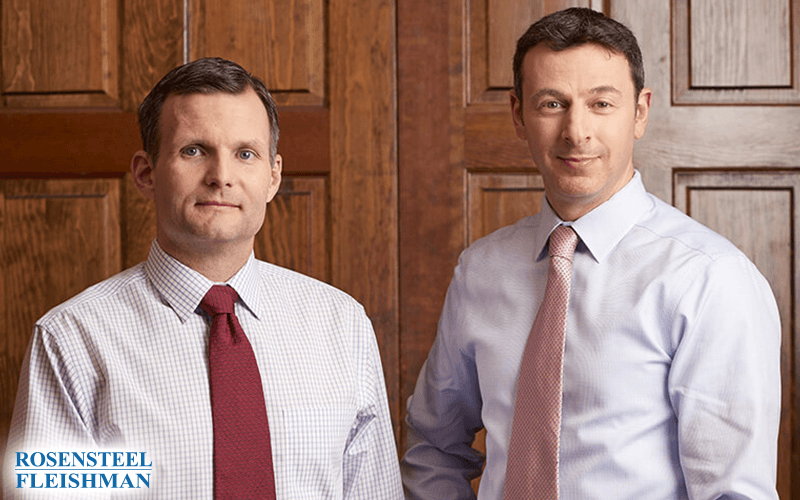Getting into a car accident can throw everything into chaos in a matter of seconds. Whether it’s a fender-bender or something more serious, the moments afterward are often filled with questions, stress, and uncertainty. You might be wondering what your next move should be, especially if the damage is more than just physical. If you're […]

The Doctrine of Avoidable Consequences in North Carolina
The doctrine of avoidable consequences is a defense in North Carolina which can lessen the damages that a plaintiff may recover because that plaintiff did not exercise reasonable care in avoiding certain consequences of the defendant’s negligence. The North Carolina Supreme Court has stated that
The rule in North Carolina is that an injured plaintiff, whether his case be tort or contract, must exercise reasonable care and diligence to avoid or lessen the consequences of the defendant's wrong. If he fails to do so, for any part of the loss incident to such failure, no recovery can be had. This rule is known as the doctrine of avoidable consequences or the duty to minimize damages. Failure to minimize damages does not bar the remedy; it goes only to the amount of damages recoverable. It has its source in the same motives of conservation of human and economic resources as the doctrine of contributory negligence, but 'comes into play at a later stage.'
Miller v. Miller (1968)
The Court went on to more clearly distinguish the doctrine of avoidable consequences from contributory negligence:
The doctrine of avoidable consequences is to be distinguished from the doctrine of contributory negligence. Generally, they occur--if at all--at different times. Contributory negligence occurs either before or at the time of the wrongful act or omission of the defendant. On the other hand, the avoidable consequences generally arise after the wrongful act of the defendant. That is, damages may flow from the wrongful act or omission of the defendant, and if some of these damages could reasonably have been avoided by the plaintiff, then the doctrine of avoidable consequences prevents the avoidable damages from being added to the amount of damages recoverable.
Miller v. Miller (1968)
In Miller, the defendant in a car accident argued that the plaintiff’s damages should be lessened under the doctrine of avoidable consequences because the plaintiff failed to fasten his seatbelt. (Note that current North Carolina statute prohibits evidence of the failure to wear a seatbelt from being admitted at trial, but this case preceded the enactment of this statute.) The Court held that because the act of fastening one’s seatbelt occured before the defendant’s negligent act and the plaintiff’s injury, it was not a proper situation to apply the doctrine of avoidable consequences.
More recent cases dealing with the doctrine of avoidable consequences tend to involve a plaintiff’s failure to follow doctor’s instructions for treatment. For example, in the 1991 court of appeals case Snead v. Holloman, the defendant argued that the plaintiff’s failure “to keep up the exercise regimen prescribed by his orthopedic surgeon” justified a jury instruction on the duty to mitigate damages under the doctrine of avoidable consequences. The court noted that
[d]amages will not be reduced merely because the injured party fails to follow the medical advice given. All he must do is to act reasonably concerning the advice which he receives. Since the test is one of reasonableness, ... it is a jury question except in the clearest of cases.
In its analysis, the court reviewed a 1985 court of appeals case, Radford v. Norris, which involved a plaintiff who was prescribed back exercises after an accident and stopped doing them because they were too painful. The court reasoned in both cases that the exercises “would have alleviated the pain and, thus, the pain was a consequence that may have been avoided.” Therefore, a jury instruction on the doctrine of avoidable consequences was proper.
A 1995 court of appeals case, Holtman v. Reese, involved a plaintiff who sought chiropractic treatment after being involved in a car accident. After the accident, the plaintiff engaged in certain “vigorous physical activities,” including high-impact aerobics, against her chiropractor’s advice. The court of appeals held that the trial court did not err by instructing the jury on the doctrine of avoidable consequences because “the evidence support[ed] an instruction on whether her participation in vigorous physical activities was inappropriate and unreasonable.”
A final example of the doctrine of avoidable consequences is seen in the 2005 North Carolina Supreme Court case, Oakes v. Wooten. In Oakes, the plaintiff suffered back injuries in a car accident. The defendants argued that the plaintiff failed to mitigate damages because he did not seek employment while he was recovering from his back injury and surgery. However, because the plaintiff’s doctor testified that he did not want the plaintiff to work while rehabilitating from the surgery, the Court found the defendant’s argument without merit. The defendants also argued that the plaintiff failed to mitigate damages because he continued chiropractic care “although it resulted in increased pain and potentially resulted in a need for surgery.” Because the plaintiff “continued in chiropractic care at his treating physician's instruction, and ... the chiropractic care resulted in no physical change to [the plaintiff’s] herniation,” the defendants did not show that the plaintiff failed to mitigate damages. Therefore, the trial court’s failure to instruct the jury on this matter was proper.
The pattern jury instructions regarding the doctrine of avoidable consequences are found in NCPI Civil 810.24 and state that
On this issue the burden of proof is on the defendant. This means the defendant must prove, by the greater weight of the evidence, the amount, if any, by which the plaintiff's actual damages should be reduced because of the plaintiff's unreasonable failure to avoid or minimize his injuries.
A person injured by the [negligent] [wrongful] conduct of another is nonetheless under a duty to use that degree of care which a reasonable person would use under the same or similar circumstances to seek treatment, to get well and to avoid or minimize the harmful consequences of his injury. A person is not permitted to recover for injuries he could have avoided by using means which a reasonably prudent person would have used to cure his injury or alleviate his pain. However, a person is not prevented from recovering damages he could have avoided unless his failure to avoid those damages was unreasonable.
(If you find that a health care provider advised the plaintiff to [submit to an operation] [(describe other treatment)], you would not necessarily conclude that the plaintiff acted unreasonably in declining such [operation] [treatment]. In determining whether the plaintiff's conduct was reasonable, you must consider all of the circumstances as they appeared to the plaintiff at the time he chose not to follow the health care provider's advice. These may include [the financial condition of the plaintiff] [the degree of risk involved] [the amount of pain involved] [the chances for success] [the benefits to be obtained from the procedure] [the availability of alternate procedures] [whether (name applicable types of health care providers) agree among themselves as to the advisability of the procedure] [the knowledge or lack of knowledge of the plaintiff] [describe any other factor supported by the evidence].)
If you have been injured in a car accident, contact an attorney at Rosensteel Fleishman Car Accident & Injury Lawyers (704) 714-1450, to discuss your options.
Additional Car Accident Articles
Getting into a car accident can throw everything off balance. One moment you're running errands or heading home from work, and the next you're dealing with a damaged vehicle, lingering soreness, and a pile of unanswered questions. It's easy to feel overwhelmed, especially when you're unsure what to do next or who you can turn […]
Neck injuries after a car accident can be confusing, frustrating, and even scary—especially when the pain doesn't show up right away. For many people, the moments after a crash are filled with adrenaline, and it’s easy to overlook subtle signs of injury. But what happens when the pain starts hours or even days later? It's […]
Getting hit by a car as a pedestrian is one of those moments that flips life upside down. You may have been walking to work, crossing a parking lot, or just heading home when it happened—and in a flash, everything changed. Dealing with physical pain, time away from your job, and unanswered questions about what […]
